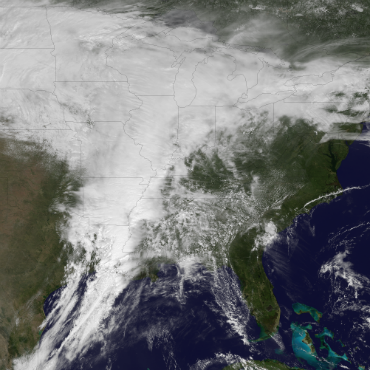NOAA turns to industry for help in sharing its data

RFI seeks suggestions on how best to offer terabytes of weather data -- and to keep taxpayers from footing the bill.

NOAA hopes to hand off its vast array of real-time weather and climate data to a non-government host that would pick up the tab for storing the information.
The National Oceanic and Atmospheric Administration shares only about 10 percent of the 20 terabytes and 15 million weather forecast products it produces each day, but the agency wants to get better at spreading its wealth of information.
For months, NOAA officials had hinted at major information sharing-moves, and on Feb. 21 the agency released a request for information seeking industry input on how private-sector entities and academia might host the data NOAA produces in standardized fashion accessible to all in a public cloud.
The caveat in the RFI is that taxpayers cannot foot the bill for any of this.
“The taxpayers already paid for all this information, said NOAA CIO Joe Klimavicz. “Right now, we want to figure out the best way to extract information from NOAA to a public cloud, and have all that information extracted from NOAA be available free of charge in its native form.”
Currently, the data that NOAA releases from its satellites, radars, ships, aircraft, river gauges and other sources is uploaded to hundreds of different websites – not the most efficient or practical method to encourage use by industry, academia or savvy start-ups.
Klimavicz can envision NOAA using a private-collective model similar to an approach that has been successful in the open-source software community. In that model, businesses would “collectively invest in creating sustainable methods to extract NOAA’s information and host it in the cloud.”
The business incentive is certainly there. Klimavicz said weather and climate businesses have continued to ask the agency and its components, including the National Weather Service, for interim products at higher resolutions and more frequent intervals.
“We’re open to new ideas. If somebody comes back with a different business model, we’ll look at it,” Klimavicz said.
Having real-time access to NOAA’s growing data sets – which will get much larger when its next-generation satellites are launched – could be a huge economic boon, especially if new businesses develop around producing value-added services from the data. Klimavicz said such an abundance of data released to the public is analogous to the global positioning system, which at one time existed only in the military’s domain. GPS and related products now add billions to the economy.
“There could be businesses we can’t even imagine that could use this information,” Klimavicz said. “Posting large datasets in the cloud is nothing new. But what is new is we’re talking about getting this information out in near real-time.”
Responses from industry are due March 24, and they may well shape how NOAA handles a procurement proposal, which could come by the end of fiscal 2014.
NEXT STORY: Why Hong Kong is worth watching



